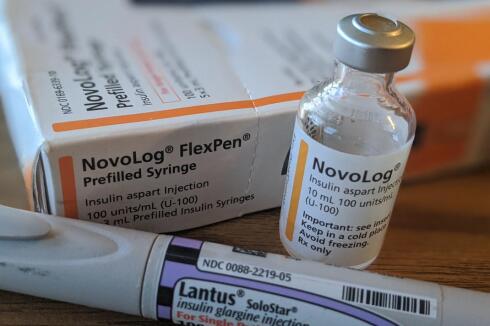ROCHESTER — The job vacancy rate in Minnesota's hospitals is falling, but those open positions for nurses, doctors and other workers remain high compared to pre-pandemic years, per the Minnesota Hospital Association's 2024 Workforce Report.
The report, published Tuesday, Sept. 3, calculated Minnesota hospitals' overall vacancy rate at 12.99% in 2024, down from a high of 16.22% in 2022. In 2020, when the global COVID-19 pandemic began, the percent of unfilled hospital jobs was 4.79%.
ADVERTISEMENT
The job vacancy rate among registered nurses also declined to 11.13%. During the prior two years, that figure was closer to 15%.
"The hospital nursing workforce, it's showing a turnaround," said Dr. Rahul Koranne, MHA president and CEO. "However, having (a) more than 11% vacancy rate in nursing is still obviously an issue."
Koranne said a likely contributor in filling those nursing jobs is pay. A recent HealthJob analysis found that Minnesota nurses' average salary is the best in the country when compared to the cost of living, and Becker's Hospital Review rates Minnesota nurses' pay as the second best, behind California.
Another factor: More nurses are working part-time. According to the report, 48.74% of hospital RNs work eight to 32 hours each week, compared to 41.36% who work full-time. (Another 9.91% work "casual" hours, defined as fewer than eight hours per week.) In 2019, the proportions of part-time and full-time nurses were switched.
"I see that as affirmation of how the hospital and health care organizations in Minnesota are embracing that choice by the RNs to have good work-life balance," Koranne said. "Our hospitals and health care organizations still continue to provide benefits."
However, as hospitals are doing better at filling nursing jobs, the percent of unfilled jobs for physicians grew in 2024. The MHA report puts that vacancy rate for doctors at 14.83%, up from 11.67% in 2023.
"Last year, the number of working physicians in Minnesota dropped by 9%," Koranne said. "That's a big number."
ADVERTISEMENT
The increase in unfilled hospital physician jobs coincides with many of those physicians hitting retirement age. According to the MHA report, in the next five years 15.62% of the state's primary care doctors will be over 65 years old, and so will 18.2% of surgical specialty and 18.9% of medical specialty physicians.
"It's the demographics that are against us," Koranne said.
The physician vacancy rate is more pronounced in Greater Minnesota's hospitals. The overall job vacancy rate for hospitals outside the Twin Cities metro, in 2024, is 15.4%, compared to 11.5% in the metro.
"In some parts of the state, if a key physician ... that was, maybe, providing labor and delivery services retires, and there's not ability to recruit or bring a physician to that local, rural hospital, that labor and delivery service has to be closed because there's no physician that provides that service," Koranne said.
At one rural hospital in Southeast Minnesota, Gundersen St. Elizabeth's Hospital in Wabasha, the vacancy rate for direct patient care roles is closer to 5%, said Jim Root, the hospital's administrator. He credits the hospital's partnerships with area nursing programs and Gundersen's La Crosse-based family medicine residency in contributing to that lower rate.
"We've opened up our doors for clinical rotations, for those students to come through, and that provides us with a wonderful opportunity to showcase our facility," Root said.
The hospital will also have three new family medicine physicians join its staff this fall, "which, in general rural (hospitals) across the country, would be unheard of," Root said.
ADVERTISEMENT
At a time when St. Elizabeth's patient census has increased, Root said efforts around staff retention focus on communication.
"It's really having that bidirectional communication with the staff to ensure that we've got adequate staff on that provides a safe environment for our patients in addition to our staff," Root said.
In Rochester, Mayo Clinic hired 3,600 people in 2024 so far, including 1,500 Department of Nursing staff and 177 physicians.
"Mayo Clinic staff are at the heart of our patient-centric mission," Mayo Clinic said in a statement. "While there is more work to do, Mayo Clinic leverages innovative models to attract and grow our top talent and increase professional development opportunities."
Those models and opportunities, Mayo Clinic said, include technology that reduces care providers' time spent on documentation, tools used for faster patient diagnoses and getting feedback from nurses during the hospital's recent conference on nursing and artificial intelligence.
Additionally, Mayo Clinic Health System has hired 57 physicians and more than 1,400 nursing staff this year.
"In response to the nationwide shortage of physicians and nurses in rural and community practices, Mayo Clinic Health System has implemented various strategies, including connecting with neighboring residency and fellowship programs, expediting the hiring process, and offering internship opportunities to students with the potential for permanent employment," Mayo Clinic said.
ADVERTISEMENT
Overall, the surveyed hospitals made 12,663 new hires in the past year, with 14,809 turnovers.
In its report, the MHA is emphasizing the need for continued state and federal government investment in medical career training.
"We need more of everybody that wants to choose health care as a career," Koranne said. "We at MHA will again be calling for a continued focus on health care workforce and continued generational investment so that our patients across the state, in metro and rural areas, can continue to get the access to health care services in their local communities."












